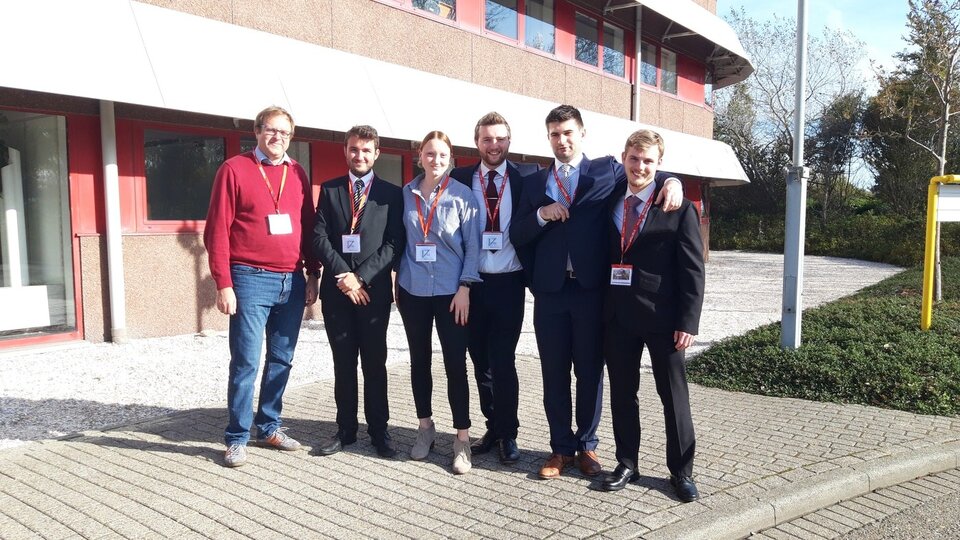Meet the teams: PHP Cubed
The PHP Cubes team is composed of five members: three Aeronautical Engineers (Liam, Thomas and Matteo) and two Mechanical Engineers (Georgie and Alexander), all studying for a master’s degree. The ESA Academy’s Fly Your Thesis! Programme is a once in a life time opportunity for them to design, manufacture and finally test new and innovative space technologies aboard an Airbus A310 in November 2019.
| University | University of Brighton |
| Endorsing professor | Dr. Nicolas Miché |
| Team | Liam Ardagh, Thomas Critchley, Matteo Pontecorvo, Georgie Crewdson, Alexander Evans |

The team is looking to take a heat management technology (Pulsating Heat Pipes, PHPs) that has been studied for years, by a team of leading researchers, at the university, and scale it down to explore its feasibility as a nanosatellite-sized solution for future space technologies. PHPs have an appeal as an alternative heat management solution for satellites as their passive hydro-thermal phenomena-based mechanics require no moving parts or pumps to work, significantly reducing the risk of the system failing and requiring maintenance; which is not always possible if the system is in space. Previous studies over the past 15 years have shown significant advances in the technology, with numerous hypothesis suggesting possible uses and exploitations for PHPs. One such theory is that PHPs may produce an acceleration as a result of the fluid motion in the device (Smith, 2017), if true this would have huge implications for the usability of PHPs in free-floating objects.
As a result, the team's experiment aims to:
- verify the feasibility of implementing a PHP onto a relatively small test unit (simulate the small environment of a nanosatellite or CubeSat™), collect data on the performances of the PHP on the ground and under the effect of a varying gravity field.
- investigate the possibility that the two-phase fluid flow motion inside the PHP could accelerate the test unit. Therefore, using the microgravity environment it will be possible to observe whether a nanosatellite’s attitude could be destabilised by the induced accelerations from the PHP.
The range of the gravitational acceleration (from 0g to 1g) will allow the team to record the performances of the pulsating heat pipes under all scenarios that it could be subjected during operation, to test the limits of the working range of the device. In practice, the nanosatellite would be launched to a similar orbit to the ISS (408km) which experiences a microgravity that ranges from 10^-2g to 10^-6g. (2) Therefore, the flights will simulate the conditions where a nanosatellite will spend most of its working life. Furthermore, due to the lack of constraints, the effects of the different and constantly changing g will affect the orientation of the device and the effects can be observed and studied.



